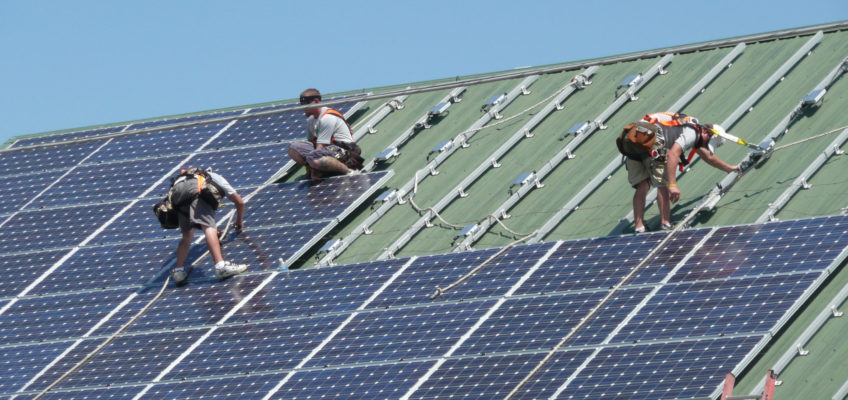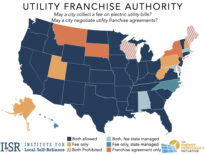As it has in the last two quarters, renewable energy supplied a majority of the power plant capacity growth for the first quarter of 2020: one-third from wind power, one-quarter from large solar, and one-seventh from small solar. Wind and solar contracted a bit, as gas started to rebound from its drop in quarter three of 2019. Despite the reduction in solar and wind percentages, new quarterly capacities from all energy sources are at an all time high for any first quarter we’ve charted– a period where growth is often slowed by construction limitations due to winter conditions.
In the chart below, we illustrate the past two years of new power plant capacity in the U.S., disaggregated by energy source on a quarterly basis.

Solar Starts off 2020 with a Record High
Solar was off to a strong start in the first quarter of 2020, reaching a record quarterly amount of new capacity. Residential solar installation throughout the quarter helped propel this growth, and small-scale solar continued its strong showing of nearly 1 in 7 new megawatts added to the electric grid. The high solar numbers for the quarter are likely residual effects of developers trying to complete solar projects to capture the 2019 solar credit.
For more on solar and how COVID-19 is impacting the residential solar industry, check out an episode of Local Energy Rules featuring Anne Hoskins, Chief Policy Officer at Sunrun.
COVID-19 Impacts on Current and Future Energy Installation
The coronavirus began to affect capacity additions in the United States towards the end of March. Given the state of the pandemic, the first quarter will likely be the only one not fully affected by the coronavirus, which is expected to slow renewable energy production for the year. Residential solar is expected to be one of the hardest hit moving forward in 2020. Closer person-to-person contact needed for residential installation, especially as stay-at-home orders, lockdowns, and supply chain will bring disruptions begin to the residential solar market. In contrast, utility PV is expected to do well throughout the year despite the pandemic. On the utility level, completion of projects under construction will vary depending on the individual state’s coronavirus response and if that work is deemed “essential,” but most projects are expected to continue.
Interested in earlier trends and analysis of new power plant capacity? Check out our archive, illustrating how electricity generation has changed in previous quarters and years.
This article originally posted at ilsr.org. For timely updates, follow John Farrell on Twitter or get the Energy Democracy weekly update.
Featured Photo Credit: U.S. Department of Agriculture via Flickr (CC BY-ND 2.0)





